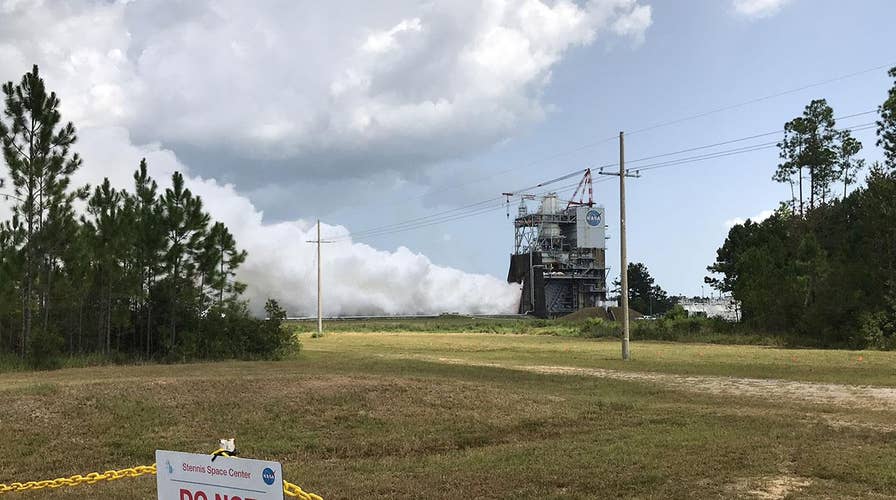US one step closer to future deep space missions
NASA’s powerful RS-25 rocket engine gets an upgraded computer ‘brain’ for latest test at the Stennis Space Center in Mississippi
STENNIS SPACE CENTER, Miss. – NASA is continuing a series of tests for its RS-25 engine, bringing it closer to a future deep-space mission to the moon and Mars.
The RS-25 engines, many of which were repurposed from the Space Shuttle program, will be part of the Space Launch System vehicle. The space agency claims that the SLS will be the most powerful rocket ever made, with two million pounds of thrust from four RS-25 engines, and eight million pounds of thrust from two solid rocket boosters.
Tuesday’s test included a new controller that will be used on actual flights of the spacecraft. The controller acts as a “brain” for the engine.
Dan Adamski, the RS-25 program director at Aerojet Rocketdyne, said the engines have been tested thousands of times, but upgrades are needed as technology improves.
“The new engine controller … controls valve positions, propellants [and] stuff like that going through the engine,” Adamski said. “Just like you’re not using the same computer that you used five years ago, we’re not using the same controller or computer that we used 20 or 30 years ago on the space shuttle main engine.”
NASA tested the engine earlier this year after adding a 3D printed part. Aerojet Rocketdyne engineers have brought down the cost and fabrication time by 50 percent, according to a press release from the company.
Tuesday’s demonstration was yet another stress test for the engine, which ran at more than 110 percent capacity.
NASA Administrator Jim Bridenstine and a delegation of political leaders including Mississippi Governor Phil Bryant, Sen. Roger Wicker, R-Miss., and Rep. Steven Palazzo, R-Miss., were on site to observe the test. The engine created an extremely loud boom and vibration that was felt by observers under a hot and partly cloudy Mississippi sky.
Bridenstine will visit several NASA sites around the country in the coming weeks.
“We’re getting ready to launch what will be the largest rocket ever launched in the history of humanity,” Bridenstine said. “It’s going to have a bigger payload capacity and a bigger faring to carry larger objects than we’ve ever been able to put into orbit. This particular rocket, the Space Launch System is going to take us to the moon, and it’s going to take us on to Mars.”
Bridenstine said NASA has made significant contributions to the lives of humans on the Earth.
He also said the money spent is worth the cause. Experts have put a $100 billion to $1 trillion price tag for a mission to Mars.
NASA is planning to put humans on the Red Planet by the 2030s.
“The reason we do it is because we want to improve human lives on Earth, and if you look at the small amount that NASA’s budget is … we’re talking about one-half of one percent of the federal budget, and you look at the return on that investment,” Bridenstine said. “NASA has blazed a trail that has improved the human condition on Earth, and we want to continue that type of investment.”
The administrator also took time to explain what impact President Trump’s proposed U.S. Space Force would have on his agency.
Bridenstine, a former Republican member of Congress representing Oklahoma, previously has voted in favor of the creation of a Space Force.
“That particular path that put NASA on the exploration [science] and discovery [has] not changed,” Bridenstine said. “NASA has hundreds of billions of dollars of assets in orbit, and we have human lives in orbit. Space is so important to the human condition on Earth. We are now at a point if we were to lose space, it would be an existential threat to the United States of America, and what that means is: it has to be defended.”
A spokesperson for NASA told Fox News the RS-25 test was a success, and lasted just more than five-and-a-half minutes.
Bridenstine said the space agency is planning a test launch of the SLS and Orion space probe within the next 18 months.





















